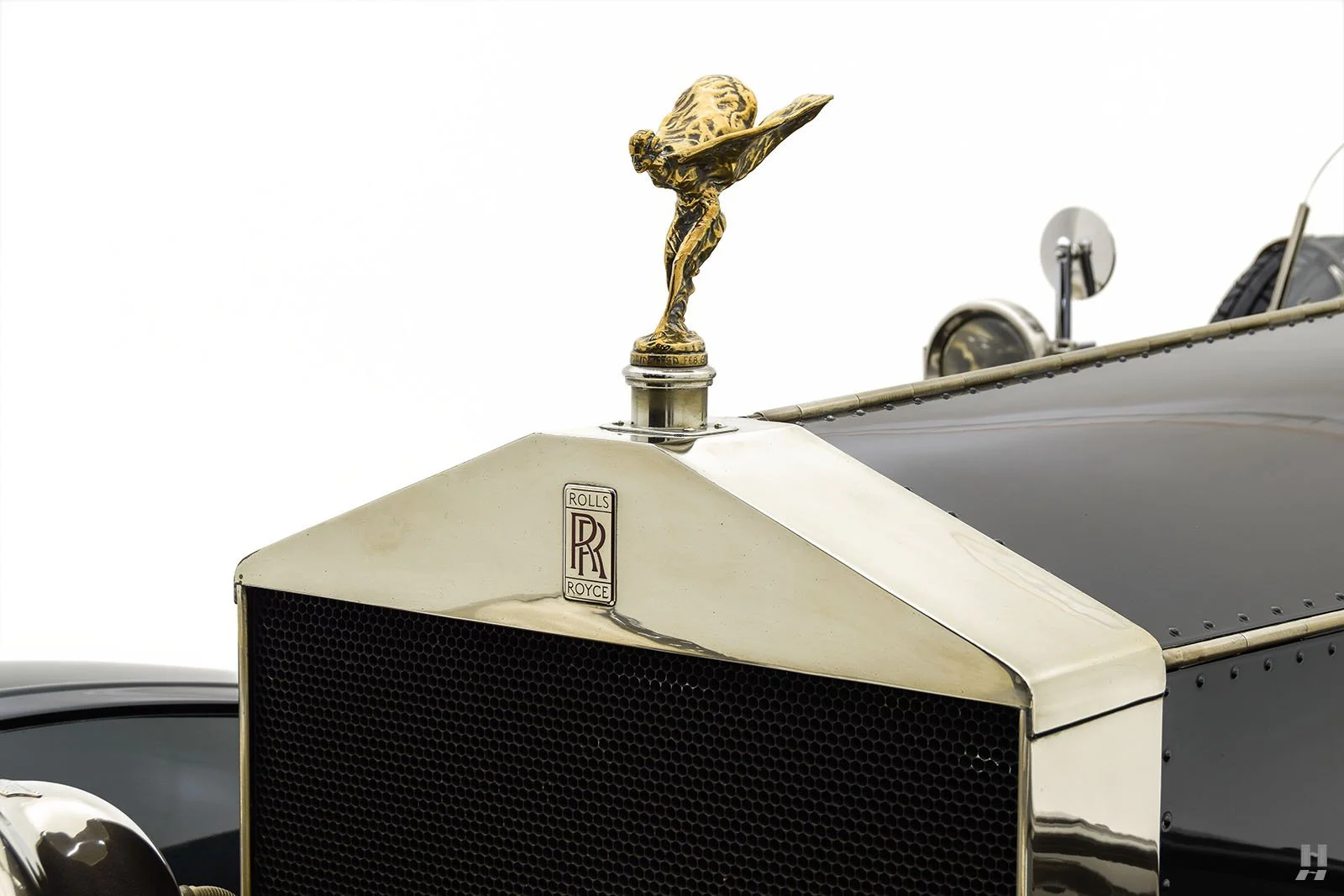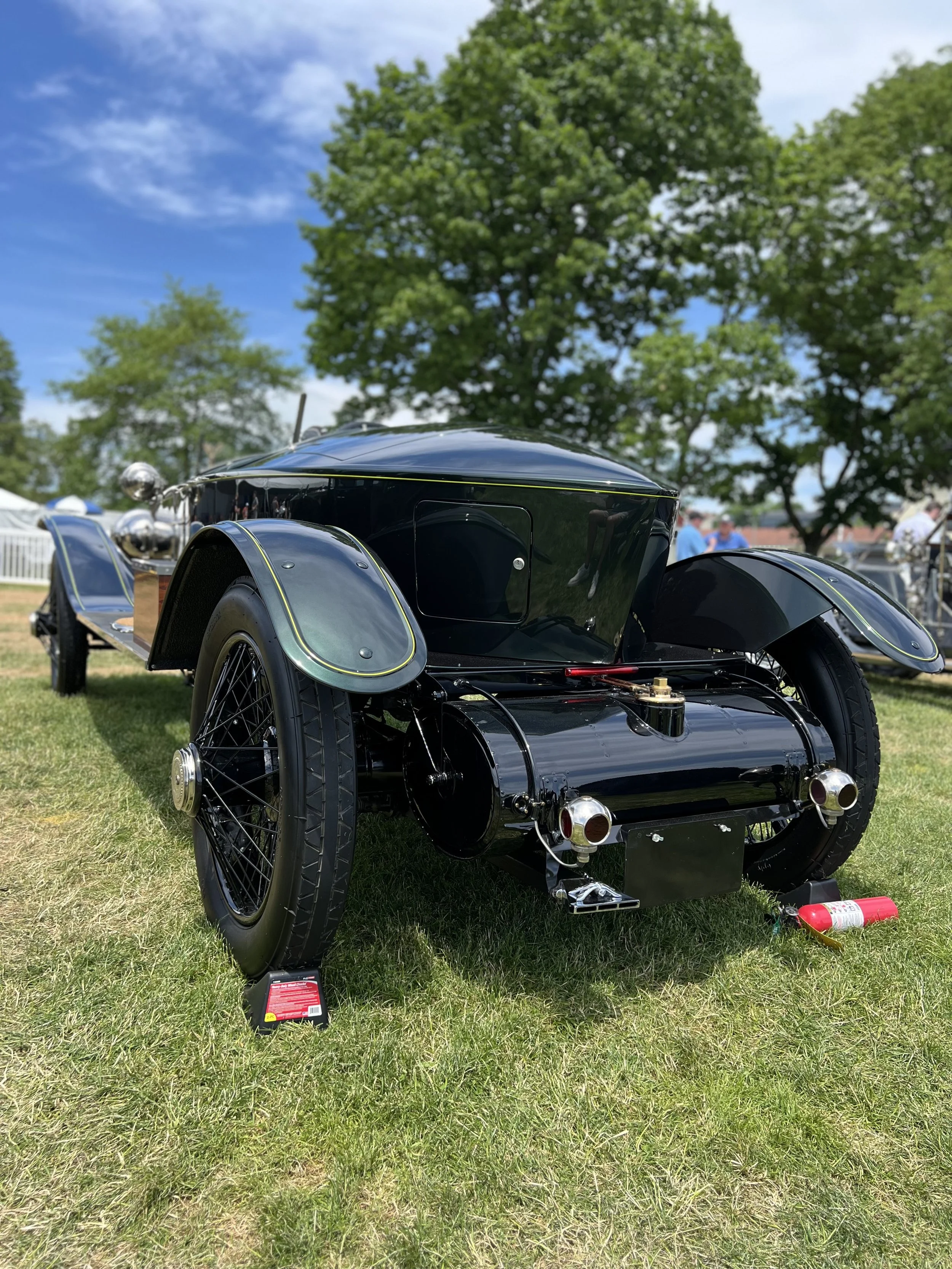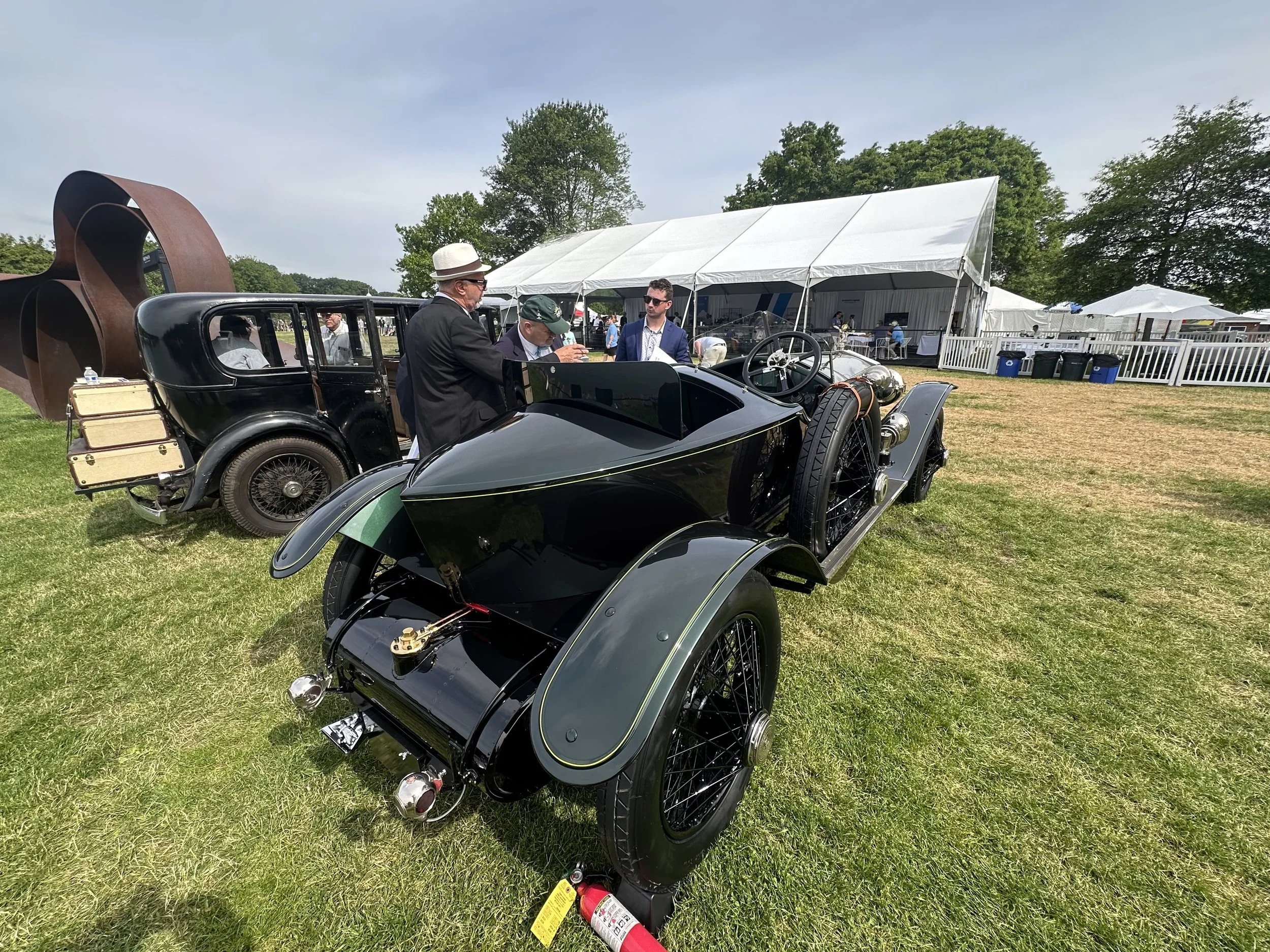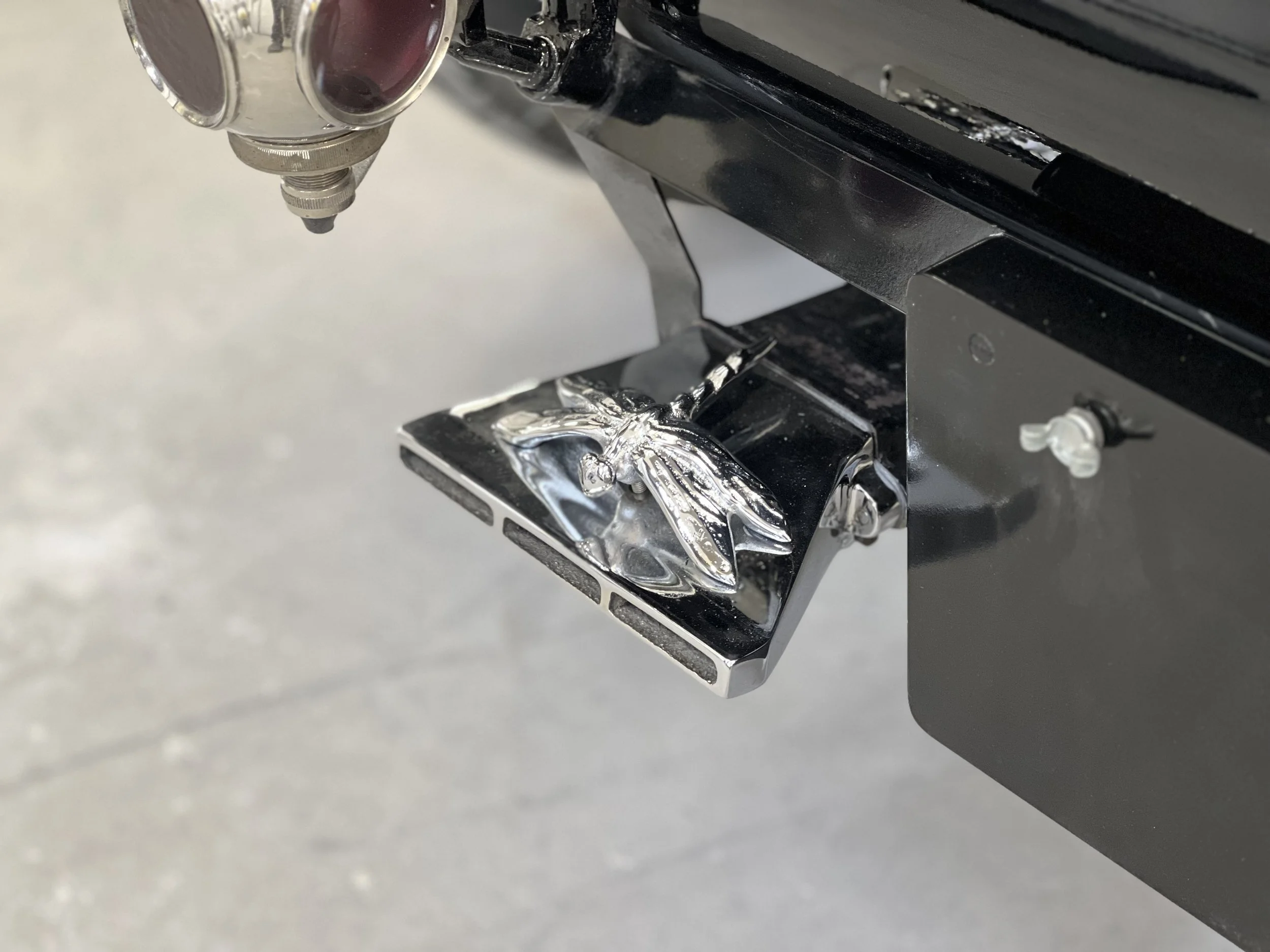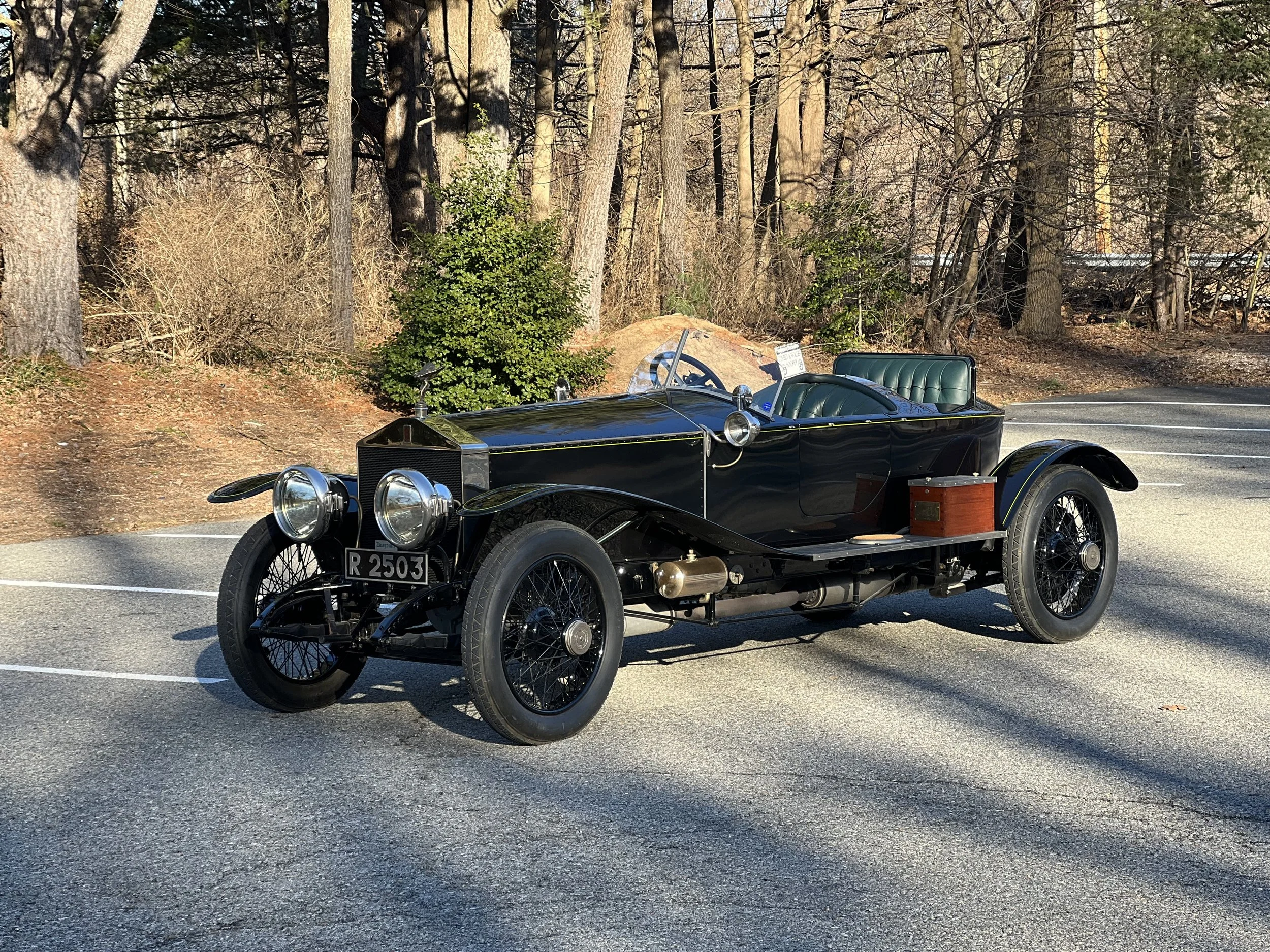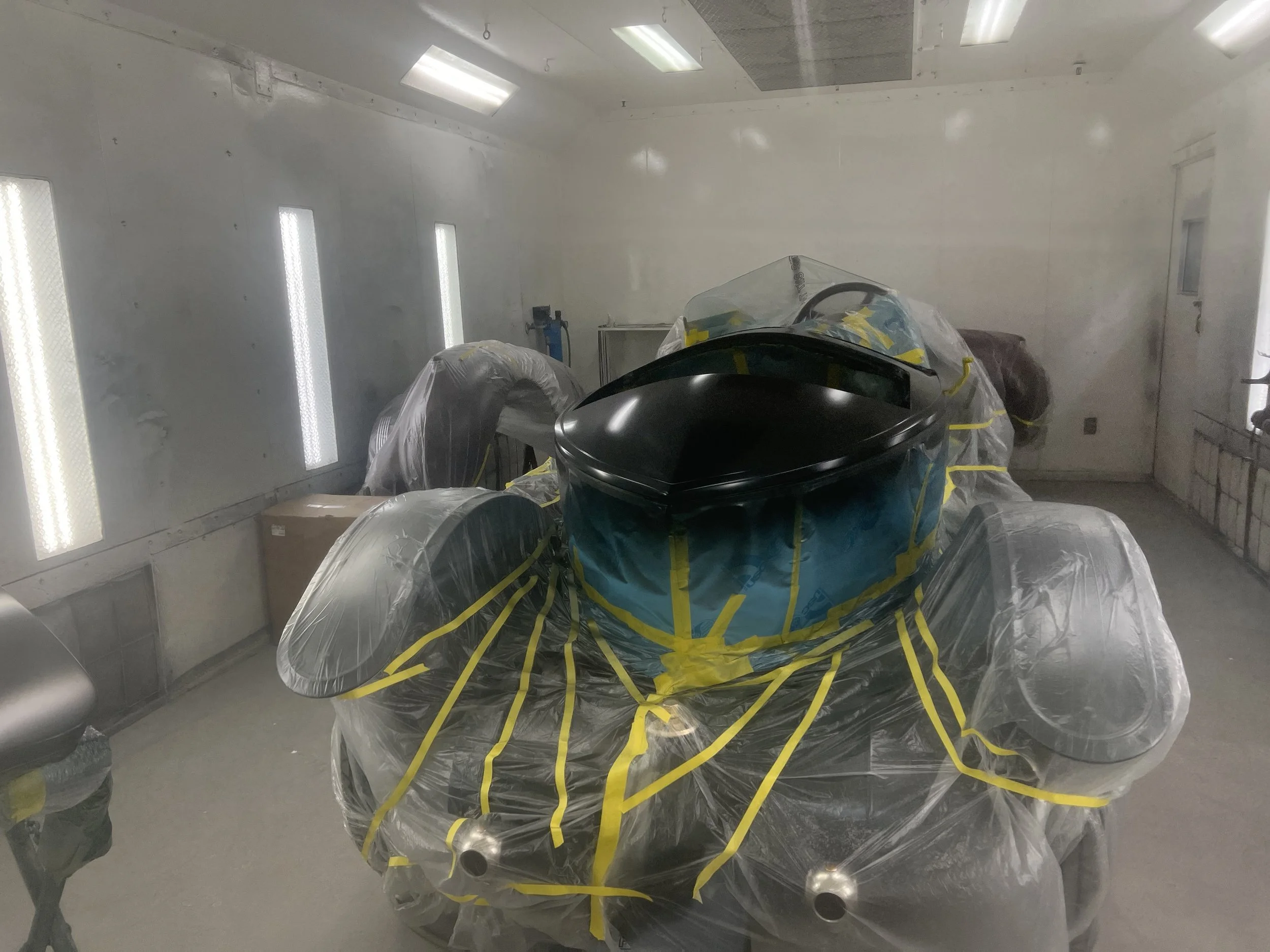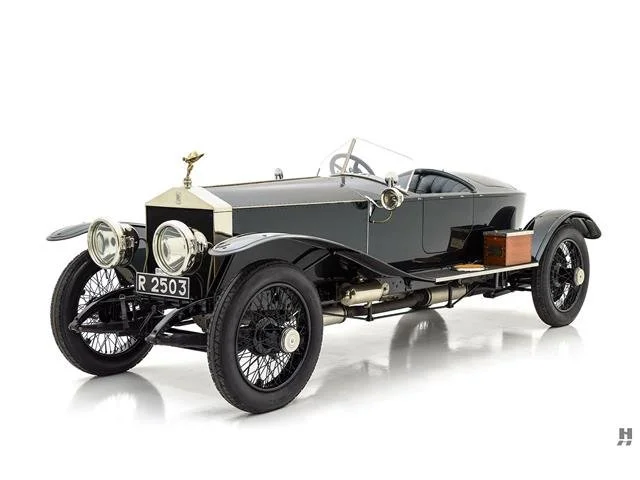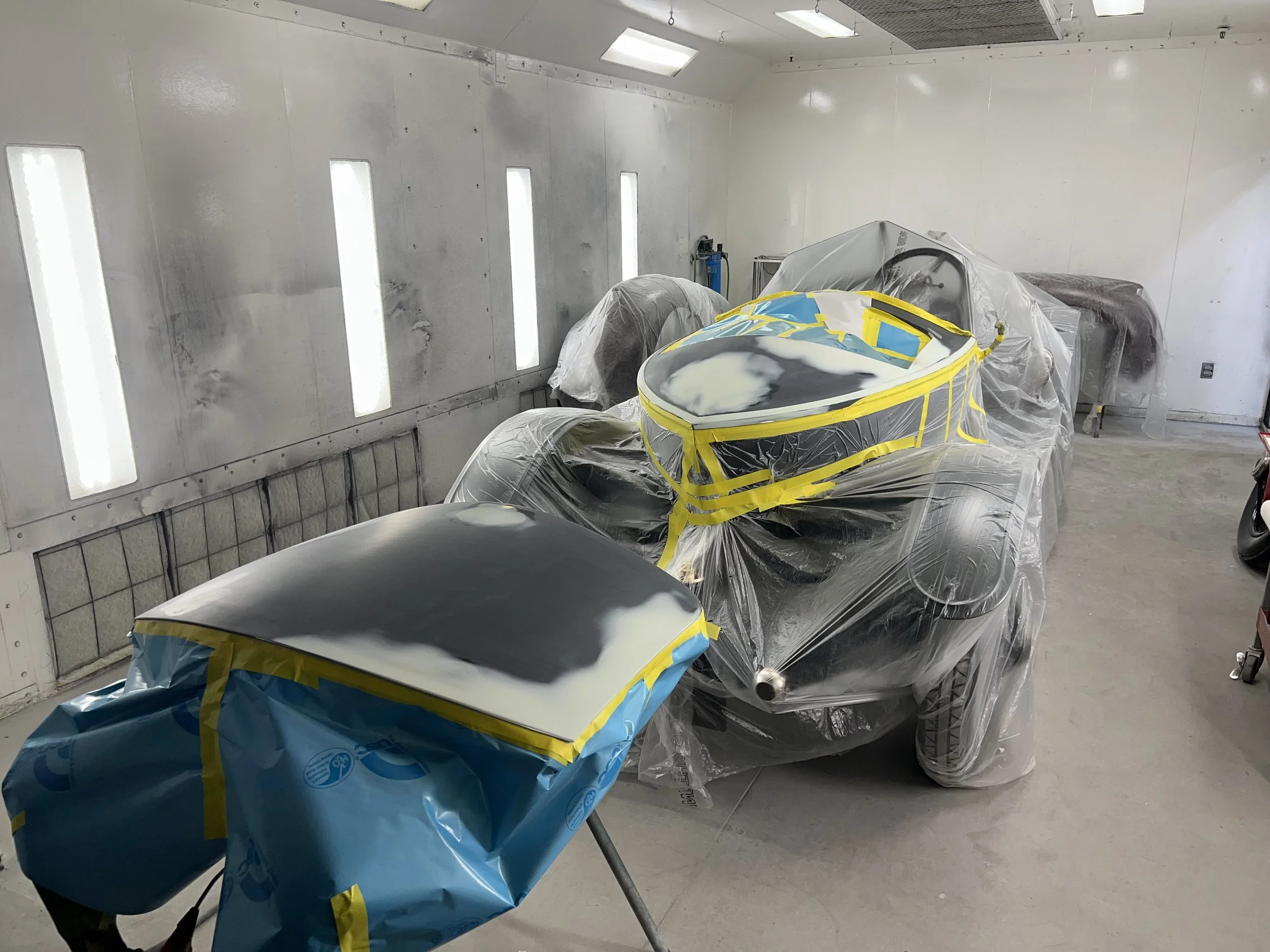1915 Rolls-Royce Silver Ghost “Dragonfly” Skiff
Chassis No. 30ED
Nicknamed “Dragonfly” for its shimmering iridescent green finish and elegant, skiff-inspired form, this 1915 Rolls-Royce Silver Ghost is one of the most captivating and storied transformations in early motoring history. Beneath its breathtaking exterior lies Chassis No. 30ED, a mid-production G-Series Silver Ghost renowned for its smooth ride, durability, and precision engineering—qualities that helped forge the Rolls-Royce legend.
Originally commissioned for Gosta Nobel, a member of the Russian Nobel family, the car’s delivery was canceled due to the outbreak of World War I. In 1916, it was instead sold to Alfred Loewenstein, a Belgian financier who would become the world’s third-richest man—and later the subject of one of the century’s most mysterious deaths, when he vanished mid-flight over the English Channel in 1928. Loewenstein initially fitted the Silver Ghost with formal limousine coachwork, and the car spent the 1920s in Britain under several owners.
By the 1930s, it had made its way to Tangiers, Morocco, where it was repurposed into a working breakdown recovery vehicle—a testament to the unbreakable quality of its chassis and engineering. In the decades that followed, 30ED traveled through France and the UK, wearing various bodies, including a torpedo tourer and later a Melhuish & Co. Canopy Brougham.
In 1993, under the ownership of H.J.T. Channing, the car underwent its most dramatic evolution: a full restoration and rebirth in the form of a dual-cockpit, boattail skiff, inspired by the great Parisian coachbuilders like Labourdette. Finished in radiant green with flowing, hand-crafted lines, the car earned its enduring nickname—“Dragonfly.” Following showings at VCC events, it was imported to the U.S. in 2005 by Rolls-Royce collector Don Meyer. Now part of the distinguished Tom Maoli Collection, “Dragonfly” continues to captivate audiences on both sides of the Atlantic. In recent years, it was shown at the Greenwich Concours d’Elegance, where it received a Specialty Award and placed Second in Show.
History and Significance
Design Differences
Signature Rolls Royce logo in red
All Rolls Royces had the red logo until 1934 when Henry Royce died
Spirit of Ecstasy Rolls Royce emblem hand made by Charles Sykes
24 inch wire wheels, only 4 inches wide
No front brakes
It wasn't until 1924, did Rolls Royces come standard with front brakes
This came with its hood without louvers as many limousine bodies did
Dual cowl lights
Sporty split “V” windshield
Driver’s side running board:
Horn
Full size spare
Shifter and emergency brake on the outside of the car
Battery box on passenger side running board
Also acts as the step to get into the rumble seat
Back half of body inspired by Labourdette’s Skiff body
Sheet metal wrapped boattail
Comes with functioning rumble seat
Lantern style tail lights
Chrome Dragonfly exhaust
Exterior
Green leather seats
Green carpeting with green leather binding to match
Firewall has all of the gauges on the car which only consists of
Voltage meter
Amperage meter
Fuel pressure gauge
Oil pressure gauge
Manual fuel pump
Fitted with a rumble seat
Interior
7.4 liter side valve inline 6
Cast in blocks of 3 cylinders each
Bore: 4.5 inches, stroke, 4 ¾ inches
NACC rating of 48.6 HP
Dual ignition system
Achieved its quietness from seven-main-bearing crankshaft and stiff crankcase
Rolls royce built their carburetor in house
Basics on the Dragonfly
Gallery
